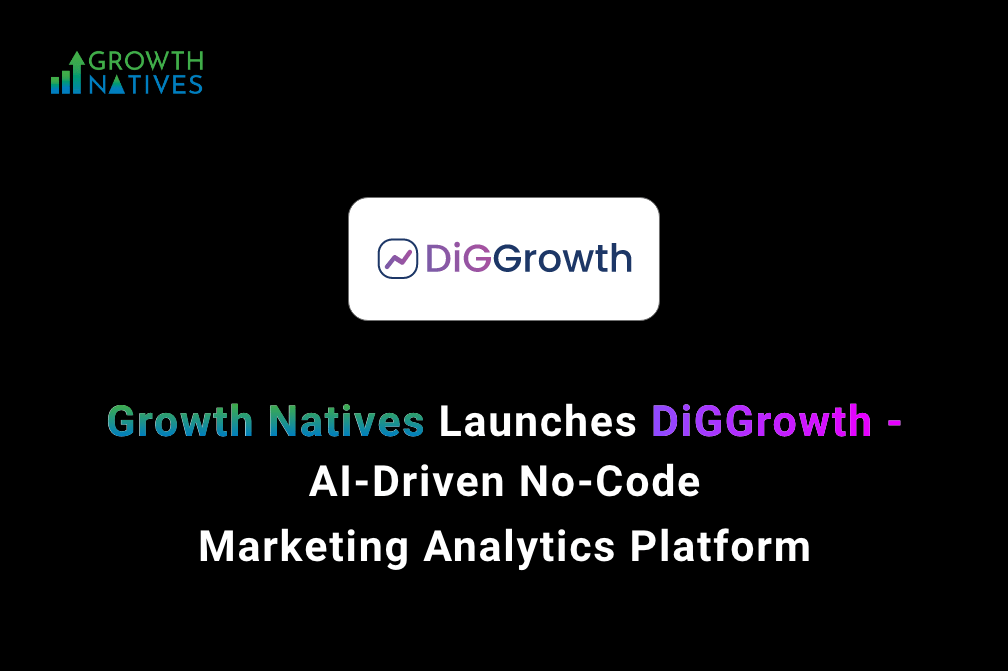
4 CRO Best Practices to Drive Business Growth
By Sakshi Arora
Dec 1, 20229 min read
You have optimized your paid ad campaigns, and now they are launched successfully. But they have a high click-through rate, higher bid estimates, and low cost per click. People are visiting your site, but still, your conversion rate is way below your expectations. You again tweak your ads but are still getting the same results.
Wondering what you can do to increase conversions? Adopt the CRO best practices that we will talk about now.
Because the problem here is not the ad campaigns, but your website.
Imagine if your customers are retargeted to the home page when they are clicking on the product page, they will get frustrated and leave your website, increasing the bounce rate and exit rate.
So, you can optimize your ads dozens of times, but if your website lacks basic navigation functionality to retain visitors, you lose your ad spends and target customers forever – all because you are unable to point your customers in the right direction.
Is your website user-friendly? Is it optimized and well-designed to drive visitors?
If you are getting visitors, but they are not converting, then you probably need to adopt some conversion rate optimization (CRO) best practices for your website.
Change the Way You Do Business with Conversion Rate Optimization
Once you understand the life-changing benefits of conversion rate optimization, everything looks different. You will be able to see the potential optimization areas in the website or landing page and also notice the barriers to conversions.
Simply put, conversion rate optimization is the action taken to increase your website’s conversion rates. CRO measures the total percentage of users who converted or took the desired action (like buying a product or downloading an ebook). If the CRO is high, your site is doing great, all your efforts are going well, and you are on the same page as your target audience. But, if it is low, you need to optimize your site and look out for hurdles that are pulling your customers away from converting.
For a successful conversion rate optimization project, you need to align with your design and development teams, and ensure that they understand the reason for website optimization – so there are no bottlenecks in between.
Now that all of us are on the same page, it’s time to check in on the top 4 CRO practices that will help your visitors convert into customers effectively.
Let’s dive in!
Top 4 CRO Best Practices
Readable and Digestible Content
How many times have you quit the page with long paragraphs? As a marketer or a business leader, even if you are into the weekly digest, you probably get tired of seeing the articles with never-ending paragraphs. The same happens with your target audience.
In this digitally-overloaded business world, people are looking for easy-to-read context especially that directly speaks to them, without making them quit on the first line. Thus, you need to create blog posts with more stats, facts, graphics, and white space. Here is a typical reading process that mostly all readers follow:
- Read the headlines, if it is interesting and relatable continue reading otherwise press the back button.
- Read the first two sentences and form a decision on whether or not the article is worth spending the time.
- Check out for interesting graphics, like facts, and figures, to see if there is anything that stands out from the ordinary.
- Sometimes start reading the entire article (if it has the right spacing) till they get bored.
As a creator, you need to craft content that grabs users’ attention and keeps them scrolling throughout the article. When you deviate from the standard structure of black font on a white background in paragraphs of 5 to 7 lines, you give the readers something exciting to explore.
It's more natural to use white space efficiently if your website. Creating groupings of colorful icons with succinct headlines or adding lists of bullet points is the best technique to accomplish this, or adding infographics or tables or even charts to boost visual appeal.
HubSpot
When it comes to creating a readable blog or content piece, HubSpot captures all the attention. The latest blog from HubSpot is the perfect example of how you can craft content that will keep your readers from dropping out.
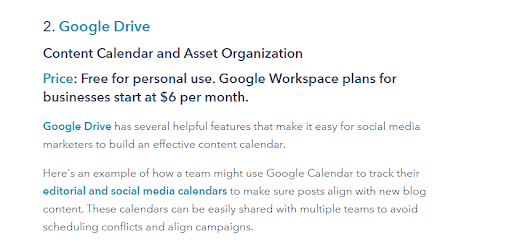
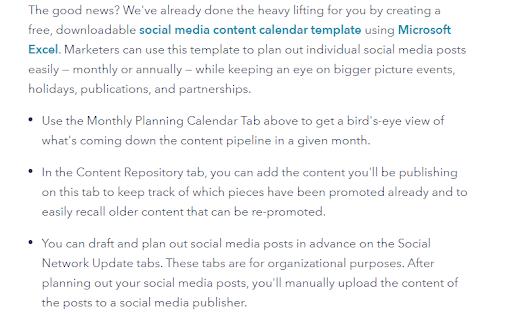
Bold And Persuasive Call-To-Action
A website without a call to action is just like driving a car without a destination. You need to create an above-the-fold CTA on your home page, product page, and landing page. If your ads have a swaying call to action, you can replicate that on your website.
You don’t need to add the exact words as your ad copy, but it should tell people what they should do next. Your website should tell your visitors why your product will make their lives better, why subscribing to your newsletter is the best thing they can do today, or why your business is better than your competitors.
Once your target audience is convinced, it’s time to make them act. And this is where call-to-action comes to play. Identify why your product will benefit your prospects, and then add it along with your CTA, making your customers feel excited to click.
We have some best examples of bold and powerful CTA for you.
Kissmetrics
A persuasive and simple CTA that will get every website owner clicking. The best thing about this CTA is it requires only a small step to proceed - the website URL. And the "Log In with Google" button makes it insanely simple for customers to get started.
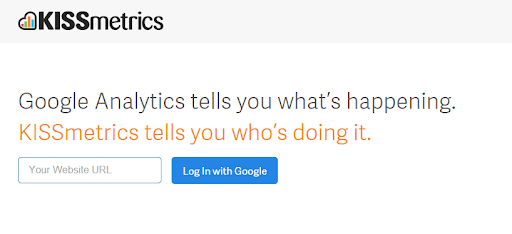
Hulu
Hulu offers a dramatic yet compelling CTA. Moreover, the dimmed background with television and movie offerings easily highlights the benefit of signing up for the Hulu streaming app.

Persuade Down The Conversion Funnel
Fully-optimized websites are equipped to retain customers. With an easy to navigate option, guiding the visitors one step after another, a user-friendly website is a surefire way to take your customers down the conversion funnel. From interest to engagement to retention – a website can do it all.
To do this, you need to eliminate all the distractions and excessive steps from your website. For example, if your customers are looking for a website design service, they should not be retargeted to the service page to reach their website design page.
Thus, analyze your website, investigate each step in your conversion funnel, and at every point check whether or not your page or content is pointing the visitors to the right next step. Does your website have any unnecessary steps that could have been easily avoided? Are there any baseless distractions? Does the website have holdups? Is your website easy to navigate? Check all of these with ‘CONVERSION’ as a goal in mind, making sure that with each page or content your visitor is able to reach the next step.
Airbnb
Airbnb has practically the best UI design in place. The website makes it really easy for people to book a stay without having to navigate from one page to another.
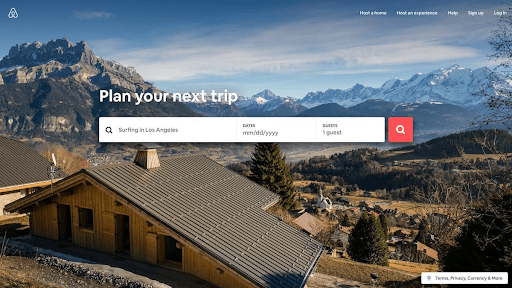
Evaluate Micro Conversions
Micro conversions are the small steps that a visitor takes that push them toward the end goal. They are the ultimate goal of your conversion funnel, having a direct impact on the sales and revenue of your company. The more the micro-conversions are carried out, the more the customers proceed towards the end.
Micro conversions let you text and experiment with your strategies because they are easy to measure and facilitate viewing the results of your optimizations. Moreover, micro conversions give you key insights into user behavior, which will help in tapping into their psychology.
For example, users registering to your website, downloading an ebook, or subscribing to your newsletters. Micro conversions are one of the most important practices that you need to follow to boost conversions.
Though these actions will not provide you with marketing qualified leads or a pool of customers by themselves, by measuring them you can get the right insights on your website’s conversion funnel.
Let’s assume, your website generates an ample amount of traffic from a Google ad, now that visitors who have checked your ads will check your website and the services you have to offer. There is a possibility that some or even none will fill out your contact form to connect with you directly, leading you to one of two things:
- The ad does not target the right audience - this means people who are truly interested in the products or services you offer. Thus, you need to check your target demographics and audience to ensure that you are creating campaigns that resonate with your audience’s needs.
- The web pages are not persuasive enough for them to click. So, as already mentioned, you need to optimize your website and landing page to get them clicking on your service page. This can be done by optimizing content, making it more conversational and informational, as well as doing what Best Practice #1 says – a compelling call-to-action (CTA).
Tracking micro-conversions, however, may help in understanding your audience's demands and customize your future actions to meet those needs. This makes it beneficial for more than just monitoring your conversion rates.
Conclusion
The best thing about participating in a game is winning. So, when it comes to CRO, you have to be a winner. But how will you know you have WON?
Those who have understood the goal behind CRO know that it is a consistent process – but continuous learning from your previous tactics, tests, and KPIs will constitute the WIN. Even if your CRO efforts are improving only 1%.
This is because once you know CRO, your optimization skills are never the same. You will be able to look out for barriers that interfere with the conversions, which will make it easy for you to increase conversions.
So, use these best practices for your next ad campaign and let us know how it goes.
Are you interested to know more about conversion rate optimization? Reach out to us at info@growthnatives.com.

